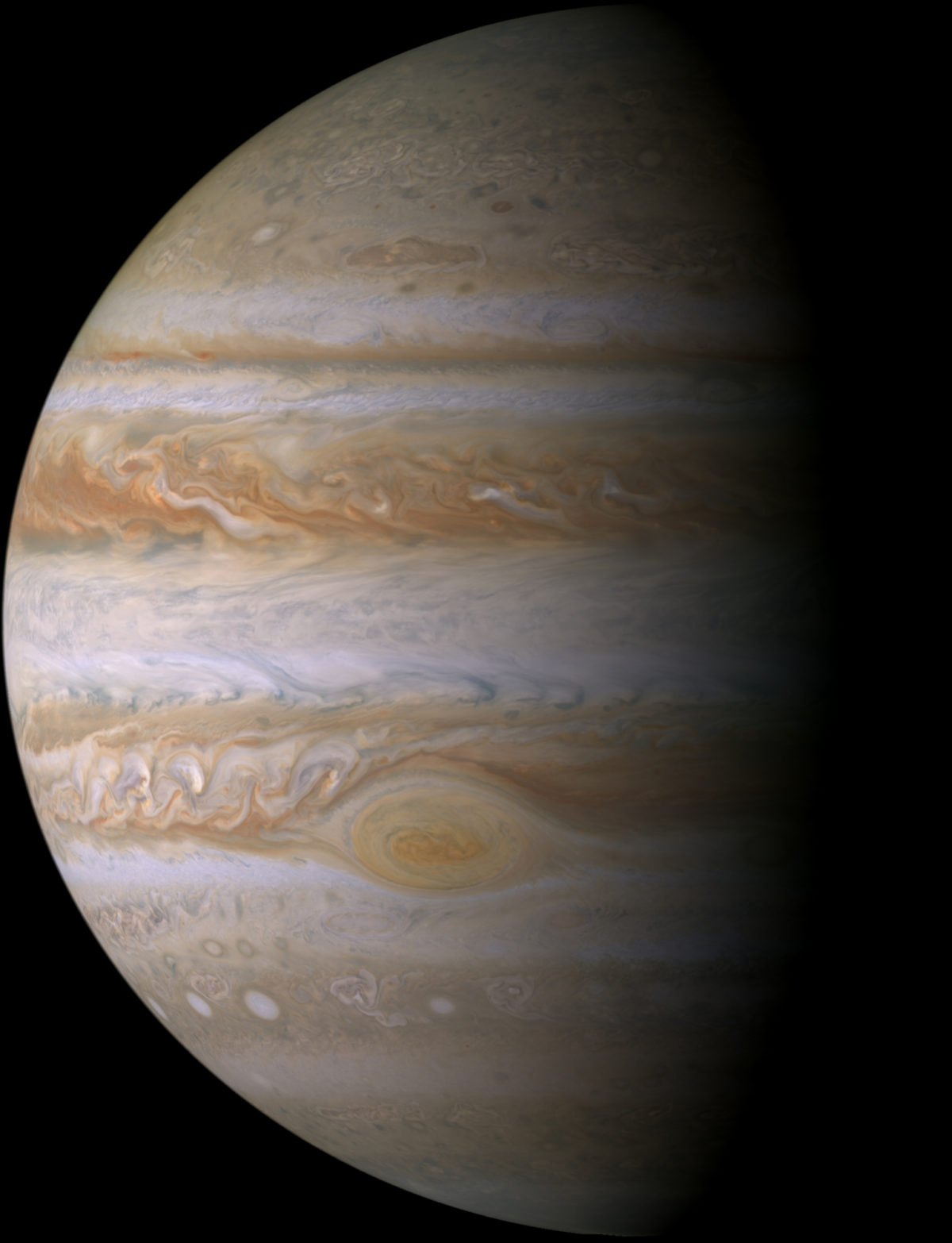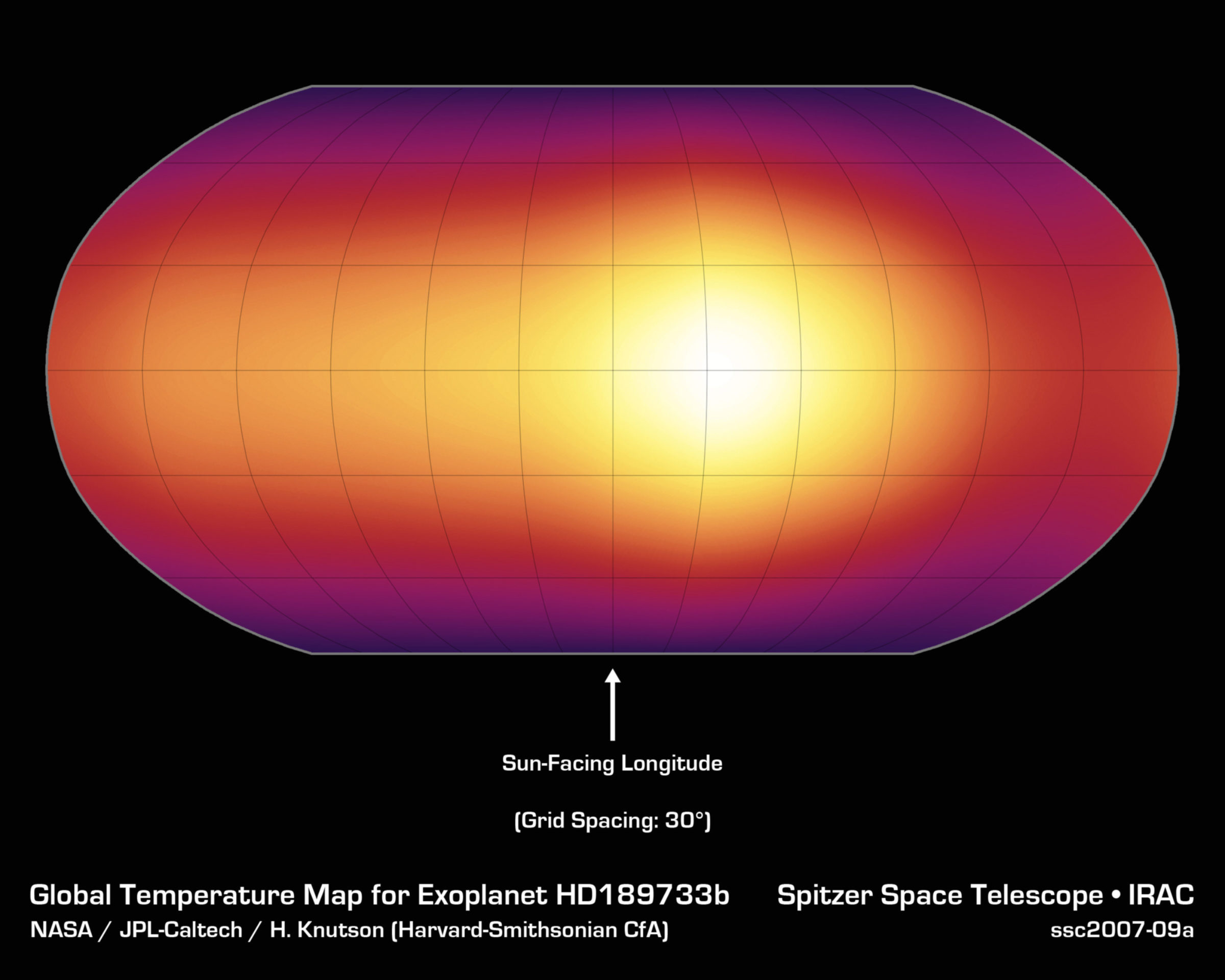Anna Scott • Jun 07, 2016
Whither the Weather? A Jet Stream Explainer
Just as jellyfish aren’t actually fish, jet streams aren’t actual streams. But they are jets—here, I’m using the word in the engineering or planetary sense to mean a band of rapid fluid flow. I say planetary because the jet stream isn’t just a handy way to shorten your eastbound flight by an hour, and it’s not a phenomenon unique to Earth. On Earth, there are four major jets: two polar, and two subtropical, all traveling to the east. On Jupiter, each stripe is a jet traveling in the east and west direction, or in planetary terms, prograde and retrograde, meaning with and against the direction of rotation.
Engineers often think of jets as the fluid flow that is forced out of a nozzle, but planets tend to lack nozzles, so the fluid is forced by energy. Energy on planets must come either from their sun or internal energy. For Earth, internal energy matters little for the dynamics of the lower atmosphere compared to energy from the Sun. Tropical regions receive more energy from the sun, where the sunlight is most direct, and the poles of a planet receive less sunlight, resulting in less energy and colder temperatures. The temperature imbalance between tropics and poles causes heat in the tropics to flow away from the equator, north and south along the meridians of longitude, towards the colder poles. Rotational effects act on the air in the form of the Coriolis force, which deflects the poleward flow in the mid-latitudes. The balance between these two forces–poleward pressure gradient and the rotational Coriolis force–produces what atmospheric scientists call geostrophic balance. Geostrophic balance prevents warm tropical air from reaching the poles, and instead allows zonal (east-west) midlatitude jets to form. At Earth’s higher latitudes, strong temperature gradients cause air flow to intensify in the region that we call the jet stream. And thank heavens for the jet stream—without it, it would be cold enough for carbon dioxide (also known as dry ice) to form snow over the Midwest, and northern Europe would never have tolerable weather. The jet stream also meanders more or less constantly, producing the fronts that those of us living in mid-latitudes know as weather. Sometimes the jet stream lets us all down, usually by meandering far enough south to bring Arctic air down south in the wintertime, or by getting stuck and not bringing any Arctic air down south in the summertime.

Compared with Earth, Jupiter is absolutely filled with jets. We can describe the Jovian atmosphere using a number of well-studied equations and planetary theory, and jets are better understood than Jupiter’s vortices (the spots and swirls you see on its surface), but this is still a very active subject of study. We don’t really know why there are so many bands, or why the bands got there to begin with, or why they’re stable. We disagree about what controls their size, or even why they go in a particular direction, though models are able to reproduce the structure we see at the top of the atmosphere pretty well. Scientists have only recently been able to connect Jupiter’s deep interior convection and magnetic forces with the surface jets. Progress is hampered by the lack of observations of Jupiter’s deep interior, which makes modeling the Jovian atmosphere very difficult, though NASA’s Juno mission will be doing exactly that this summer (Juno arrives at Jupiter on July 4th!). Arriving at a description of Earth’s circulation required hundreds of years of study, plus thousands more of actually being on Earth, so for only 350 years of study, I would say Jovian meteorologists are doing a pretty good job.
What about exoplanets? Observing exoplanets as they transit across their stars can give us information on the atmosphere. From our great distance away, we can't see much spatial detail, but we can observe for a long time, meaning that we can get enough data points to start to get a rough map of an atmosphere. Directly observing jets is out of the question (for now!), but we may already be seeing the effects of jets. A key signature of jets is that they redistribute heat. Absent jets, planets are hot at the equator, cold at the poles, and hottest right around where the sun is shining. If we can see temperatures where they shouldn’t be, for example, warm near the poles or cold air near the equator, we can infer that a jet may be responsible. So provided that we can thermally image planets, we can start to ask questions about jets.
For example, HD 189733b is an exoplanet just a hop, skip and a jump away from Earth (that makes approximately 63 light years, for the metric enthusiasts). It’s classified as a hot Jupiter, which means that it is a giant gas planet sitting very, very close to its parent star. It is so close to its star that its temperature can reach up to 930°C (1700°F), so its atmosphere must slowly be boiling away, and it rains molten glass. All in all, it sounds like a charming place, though to be fair, we should mention that it is one of the few exoplanets where water has been definitively found. But because it lies so close to its star, frequent stellar occultations give us ample chance to observe it, and in 2013 scientists thermally mapped it by measuring the infrared radiation signature as it rotated. These thermal images show that the hottest spot of the planet is offset by 30 degrees of longitude as compared to the location directly underneath the star (location of high noon or the substellar point), suggesting that the jet stream could be moving at more than 9500 km/hour (or 6000 mph).

No matter which planet we’re interested in, we can model jets using equations of thermodynamics and basic information like the atmospheric composition, gravity, and temperature of a planet. Numerical models can give scientists insight into what possibilities obey the laws of nature, as well as allow us to test our ideas against observations. Though observations are limited, the questions we can ask through modeling are limitless.
For more reading:
Jupiter’s Jet Streams, by Elizabeth Zubritsky
Using Earth climate models to simulate exoplanet atmospheres
How will Juno look inside Jupiter?
Jovian atmospheric dynamics: an update after Galileo and Cassini, by Ashwin R. Vasavada and Adam P. Showman
The Time is Now.
As a Planetary Defender, you’re part of our mission to decrease the risk of Earth being hit by an asteroid or comet.
Donate Today

 Explore Worlds
Explore Worlds Find Life
Find Life Defend Earth
Defend Earth



